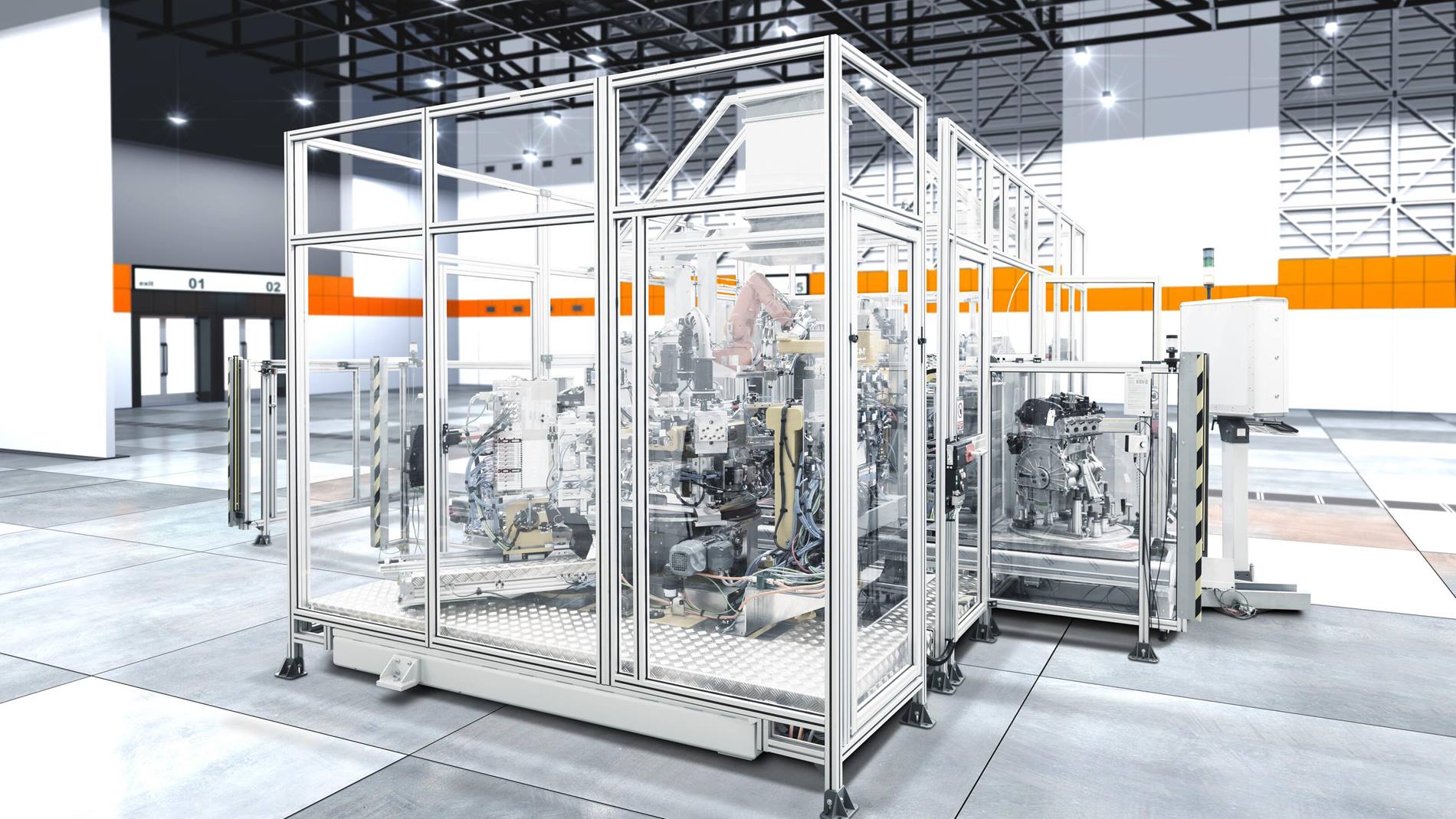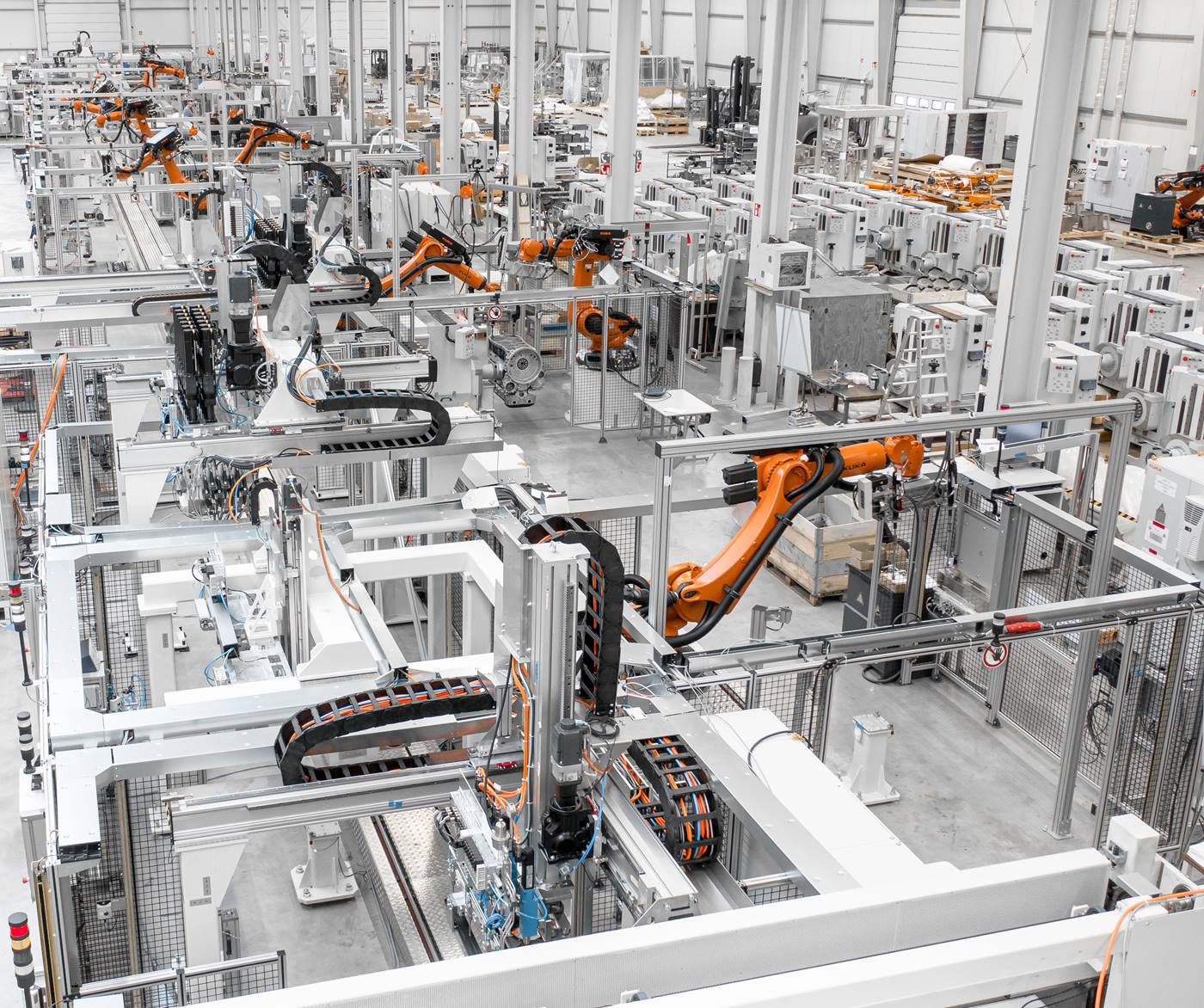Maximum variety and flexibility
The commissioned KUKA team of experts, based in Bremen, Germany, specializes in assembly and test systems for powertrain assemblies for automobiles and trucks - such as engines, cylinder heads, axles, transmissions, and steering systems. The KUKA team invested two years in the conception and design, leading to the successful commissioning of the test system. "With this know-how, we help our customers to achieve high volume and variant flexibility with low fixed system costs.", says Nils Priebe, Head of Sales & Project Management Test Systems at KUKA Assembly & Test in Bremen. "The special feature of this station: the possibility of converting it for future engine variants in ever shorter conversion periods.”
The system includes a turntable concept consisting of two rotary indexers to ensure maximum variety. For this purpose, a turntable was mounted on both the inlet and the outlet side of the engine with eight different adaptation sides for sealing. This concept allows the testing of all three and four-cylinder engine generations of the last few years and thus maximum flexibility.
The system includes a turntable concept consisting of two rotary indexers to ensure maximum variety. For this purpose, a turntable was mounted on both the inlet and the outlet side of the engine with eight different adaptation sides for sealing. This concept allows the testing of all three and four-cylinder engine generations of the last few years and thus maximum flexibility.







